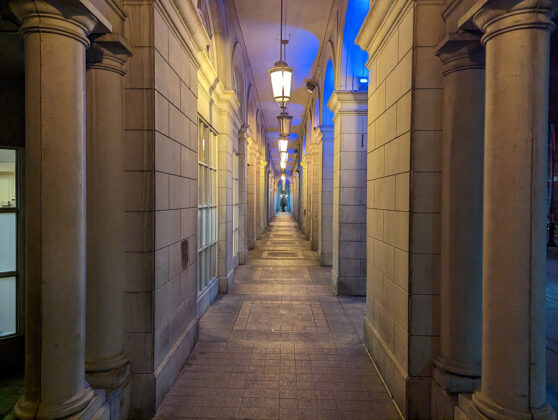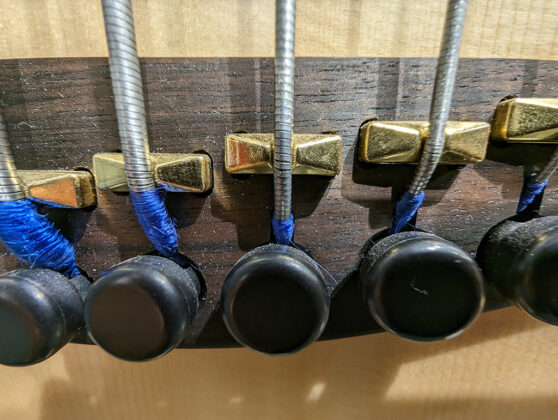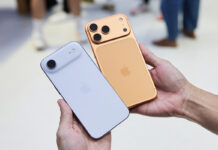![]()
The Google Pixel 7 Pro looks and feels a lot like its predecessor, though can still stand out as one of the best Android handsets available. Google went with a new design philosophy in 2021 when it launched the Pixel 6 Pro and Pixel 6, largely sticking with that for the Pixel 7 Pro and Pixel 7.
These phones continue to tout the same focal points so common with Google’s Pixel phones. A smooth Android experience, unique features—and especially—camera performance. All of those apply here, and while the Pixel 7 Pro I reviewed doesn’t take a big leap forward, it is a phone you may want to consider if you’re due for an upgrade.
Google Pixel 7 Pro SpecsDisplay: 6.7-inch 3120 x 1440 AMOLED display 19:5:9 aspect ratio with 512 pixels per inch |
Pixel 7 Pro design
I covered some of the design elements when Google unveiled the Pixel 7 duo, but here is the gist. The dimensions and weight are almost identical. It uses the same exact 6.7-inch AMOLED display (plus 120Hz refresh rate), except it can get 25% brighter this time. The curved edges don’t slope as much, making this phone feel a tad flatter. With the power and volume buttons situated lower here, you won’t be able to use a Pixel 6 Pro case with the 7 Pro.
I highly recommend getting a case to protect this phone, no matter what. Google put tougher Gorilla Glass Victus+ protection on both the front and back, but it’s best to treat the Pixel 7 Pro more delicately. Without one, it feels slippery and sometimes difficult to get a grip.
The fingerprint sensor—a weak link in the previous model—is better this time. Not great, but better. I found it far more responsive and never had to repeat touches like I did with the 6 Pro. If you prefer, you can always try Face Unlock instead. Google integrated it into the new 10.8-megapixel front camera, powered by the company’s new Tensor G2 processor.
The new chipset is the key to so much of what this phone does that others don’t. I’ll get to that further down, but the other basics you need to know are these: you get 12GB of RAM, plus 128GB or 256GB of storage.
Use and performance
The Pixel 7 Pro works on a marriage of hardware and software that is supposed to be unique. Google’s Tensor G2 is an iterative improvement over the previous chip, yet its real prowess shows in how well it works with Android. Much like I experienced with the Pixel 6 Pro, this phone performed smoothly. I guess I may have been one of the lucky ones with the 6 Pro, despite credible claims of bugs and issues afflicting other users.
Over my time testing the 7 Pro, I didn’t encounter problems impacting the device’s functions. Mixed usage, like messaging, calls, browsing, photos, etc. were fine. I could edit photos without worry, and even play games effectively. I tried the phone using Xbox Game Pass and, though it did run a bit hot, it was fine.
Where the Pixel stands out more, at least to me, is the features other Android phones don’t have. The call-related ones are excellent, all of which build from Google Assistant. Direct My Call can show you what the automated menus will be when you call a business beforehand so you can go straight to the department or person you want. Hold for Me will stay on hold for you during a call, and then alert you when someone’s ready to talk to you. Call Screen warns for possible scam or spam calls. Translate still works when you use Google Translate, or even while using Google Lens in the camera to understand signs, menus, or any other written language.

Photo Unblur
Tensor G2 also powers new photography-related features, like Photo Unblur. You’ll find it under Tools in Google Photos, and is currently exclusive to the Pixel 7 devices. Basically, it uses Google’s AI and machine learning software to try sharpening a blurry image. You can try it with any photo, not just those you’ve shot with this phone.
It depends on how blurry the photo is to begin with, which explains why you may see mixed results. The feature is interesting, and well worth trying out, with the possibility it only gets better over time. Magic Eraser is still there, and continues to work magic in removing people or objects from images.
![]()
Camera output
The beauty of a Google Pixel is that it can take great photos without you thinking too much about composition. Look at the specs, and the rear camera array is exactly the same as the Pixel 6 Pro. It’s the software doing more of the work here, and it shows in a few key respects. Take a photo in Night Sight, and it renders in half the time. That’s significant whenever you shoot in low-light or nighttime. The highlights, shadows, and white balance sliders are excellent, and worth using to get the right look.
Bear in mind that when you shoot using the main 50-megapixel camera, you’re actually shooting at 12.5-megapixels because of pixel binning, a process that merges pixels together to make them bigger, and thus, capture more light. The main camera also has a new macro mode you can see when you move in for a close-up of any subject.
The 48-megapixel telephoto goes to 5x optical zoom to get you a little closer to your subject from further away. You can go even further with Google’s Super Res Zoom software, where it’s possible to get good shots at up to 10x hybrid zoom. The highest is 30x hybrid zoom, but your results will vary considerably.
The 12-megapixel ultra-wide camera is mostly the same as before, though it goes wider than the Pixel 7 at 125-degrees. For the Pixel 7, it’s a 106-degree field of view. Needless to say, you can cram a lot into one frame with it. Action Pan and Long Exposure also return as special modes, but I’m not sure they come out all that differently.
Video recording
As good as Google is at still photos, it continues to work on improving video to compete with the likes of the iPhone. You can shoot in 4K at 60fps, which is great, and even in 10-bit HDR, if you have the gear or software to handle it. Google made autofocus lock on faster than before, which makes capturing moving subjects easier. I like that you can pair a Bluetooth microphone to the Pixel 7 Pro and record audio from it. It’s great if you’re a vlogger or traveller and want your voice to come through over what you’re shooting.
The newest feature is Cinematic Blur, a feature that looks a lot like Apple’s Cinematic Mode. It applies a bokeh effect to video, where changing the focal point adjusts the effect. It’s not bad, but could use some polish to make the transitions look a little more fluid. You’re also limited to 1080p HD resolution and have little access to other settings within the mode.
Battery life
Pixel phones don’t have a great reputation for battery life, but my experience has mostly been positive. I didn’t experience the issues others did with the 6 Pro and I found the same to be true of the 7 Pro. Now, I will say, battery life is average, so it’s neither spectacular nor abysmal. I was able to go a full day, but if I used it more heavily throughout the day, I would make sure to charge it at night before bed.
You don’t get a wall charger in the box (those days are over), but you do get a USB-C cable and USB-C-to-USB-A adapter. The phone supports wireless charging plus reverse wireless charging, just like its predecessor did. Adaptive Battery and Extreme Battery Saver are back, as well as power-saving options, like Flip to Shhh available under Settings>System>Gestures.
Final thoughts
Google didn’t make any drastic changes to the Pixel 7 Pro, it just iterated over what it did last year. That’s par for the course with smartphones these days, and when it comes to Android phones, this is one of the best you can get your hands on. Its mix of daily performance and camera output are competitive and user-friendly.
It won’t match the power and battery life of the Samsung Galaxy S22 Ultra, but it takes better photos with less work. Unless you need a phone that pushes the envelope from a performance standpoint, you should be fine with what you get here.
The Google Pixel 7 Pro is available now on Best Buy in obsidian black.














I do like the Pixel range (and I say that as an iPhone user). Google are putting a lot of effort into creating competitive and distinctive phones. The cameras and photo processing are particularly interesting. I’ve so many blurry old photos I hope photo unblur becomes a major feature for future smartphones. Look forward to seeing a long term review to see if they live up to their potential.
Comments are closed.